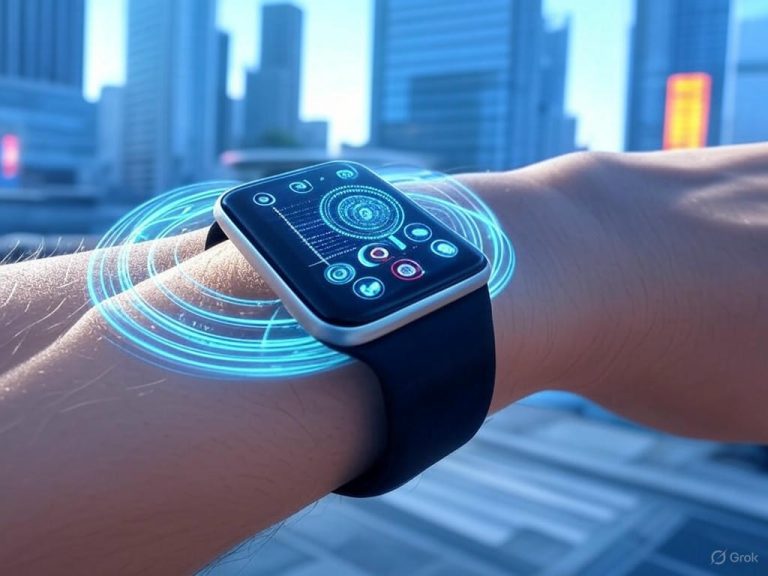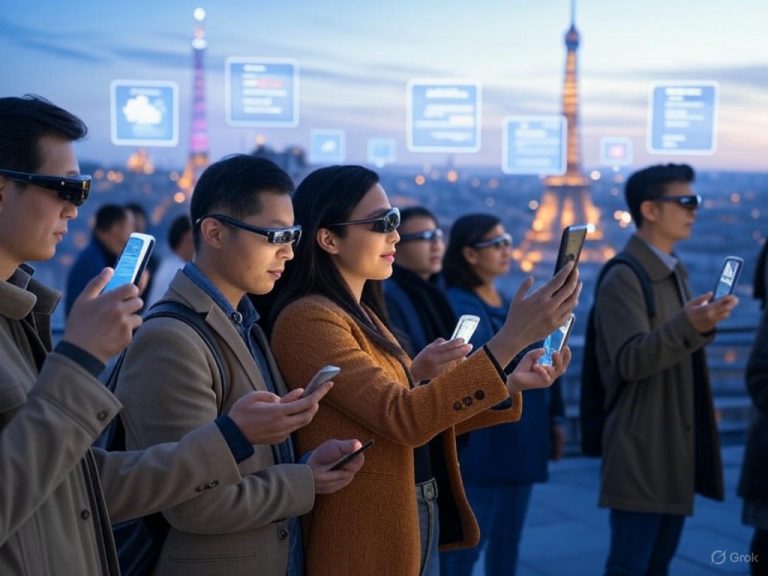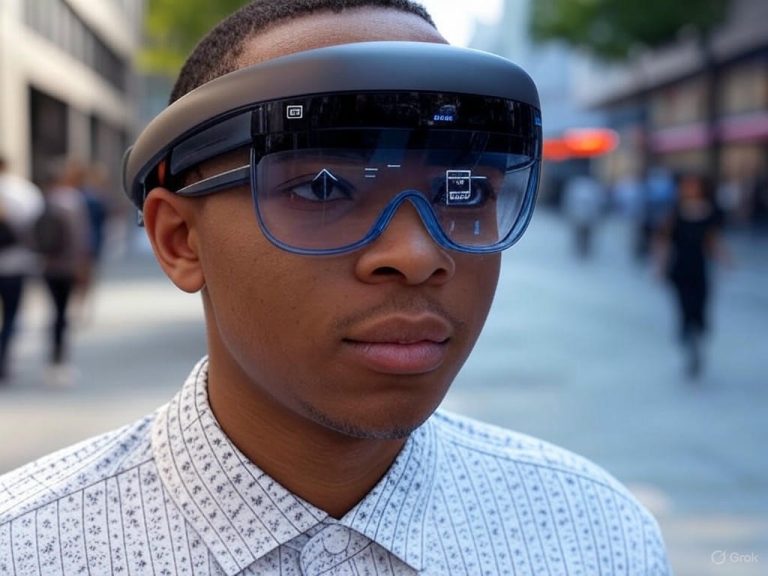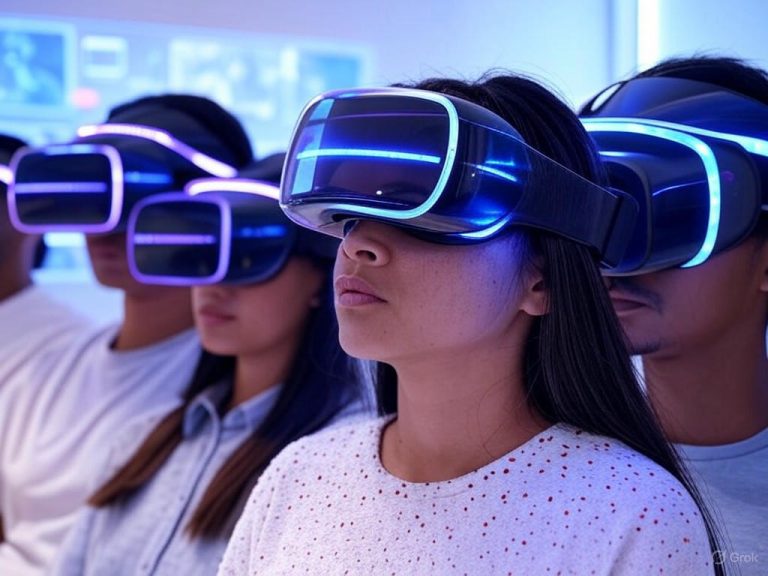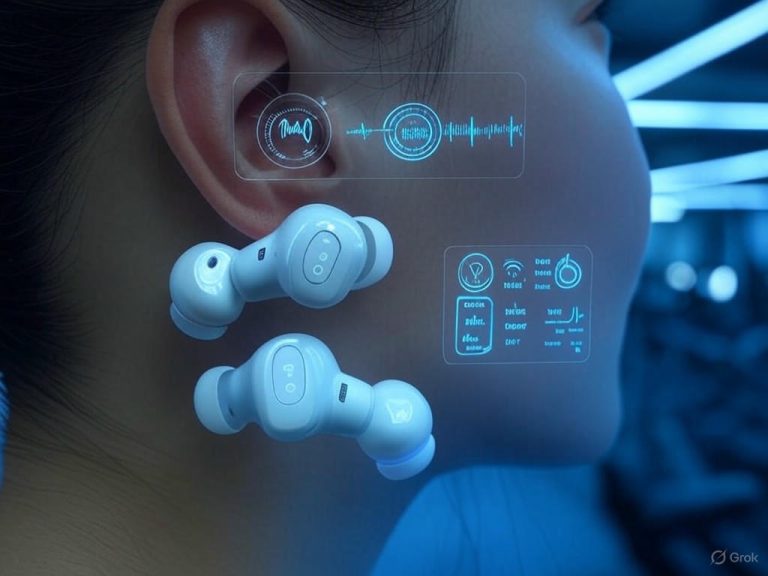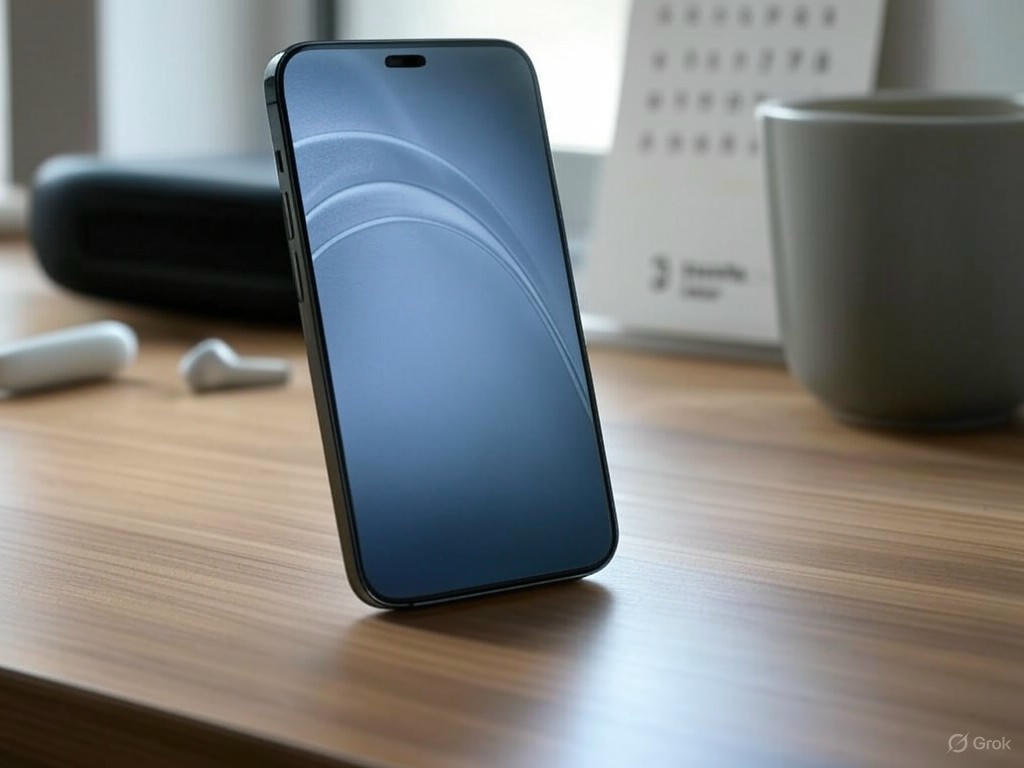
- Introduction & Technical Overview: Has the iPhone 16 Pro Max Redefined Expectations?
- Hardware at a Glance: The Facts
- Software: iOS 18, Apple Intelligence, and Photos Revamp
- The Standard: What Matters in a Flagship—And What This Review Will Test
- Performance, User Experience, and Real-World Utility: Beyond the Spec Sheet
- Performance, User Experience, and Real-World Utility: Beyond the Spec Sheet
- Comparative Assessment & Verdict: Is It Worth the Upgrade or the Price?
- Performance: Incremental, Not Transformative
- Battery Life & Charging: Modest Progress, Still Lagging Android
- Display & Usability: Bigger, Brighter, but Bulkier
- Camera Results: Evolution, Not Revolution
- Apple Intelligence & Software: Still Maturing
- Value and Upgrade Verdict: Who Should Buy, Who Should Wait?
- Key Takeaways
iPhone 16 Pro Max Review: 3 Months In—Is It Truly an Upgrade?
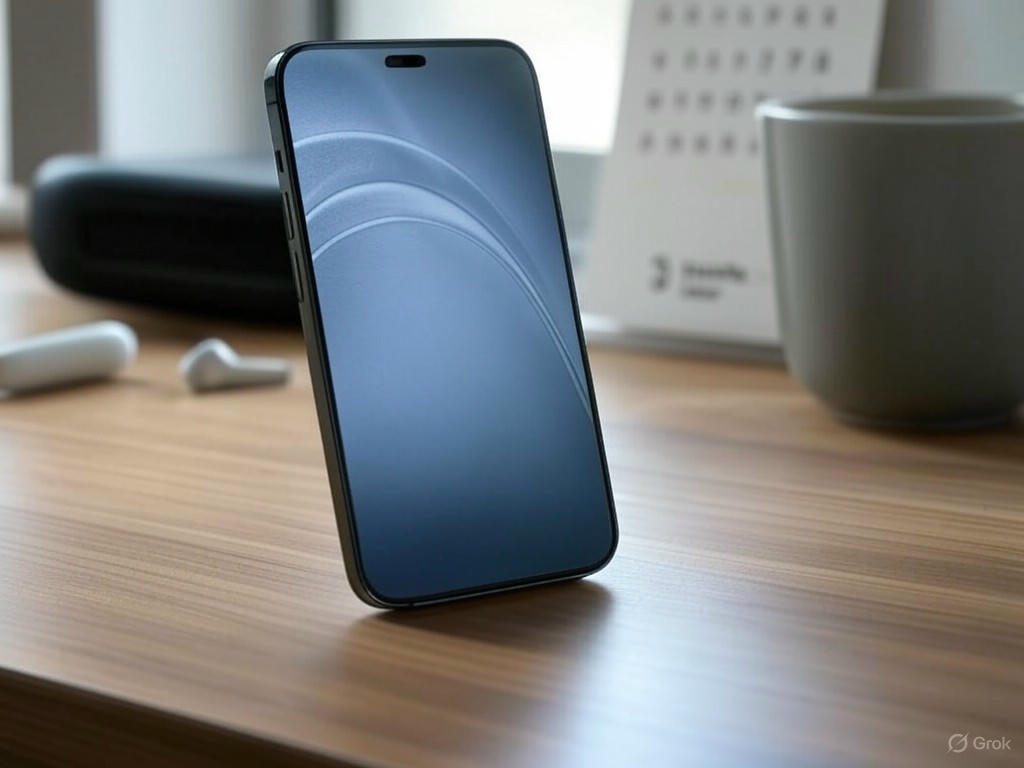
Introduction & Technical Overview: Has the iPhone 16 Pro Max Redefined Expectations?

Three Months In: Is the iPhone 16 Pro Max Actually a Game Changer?
Every new iPhone launch sparks the same question: Not just how does it impress on day one, but does it actually improve daily life over time—especially given that $1,199 starting price (and climbing fast for more storage)? After three months of hands-on, real-world use, I’m filtering out the marketing noise. What matters: reliability, real utility, and tangible improvements over the iPhone 15 Pro Max—or even the 14 Pro Max. No hype—just whether the iPhone 16 Pro Max delivers where it counts for demanding users.
My Review Lens:
I’m evaluating this device against three fundamental criteria:
- Reliability: Is the 16 Pro Max consistently stable, smooth, and free of the bugs and quirks that have plagued some recent iOS releases?
- Real-World Utility: Do the features, size, and design actually make daily tasks—photos, messaging, streaming, productivity—better, or just more complicated?
- Measurable Gains: Does the 16 Pro Max offer practical advantages you’ll notice over the 15 Pro Max, not just on benchmarks or spec sheets?
With those standards set, let’s break down the hardware and software that set the stage for this long-term review.
Hardware at a Glance: The Facts
Bigger, Heavier, More Premium—But Is It Too Much?
At 6.42 inches tall, 3.06 inches wide, and tipping the scales at 227 grams, the iPhone 16 Pro Max is officially Apple’s largest and heaviest phone to date (Sources: Apple, GSMArena, AppleVis). The 6.9-inch Super Retina XDR OLED takes up almost the entire front, packing a sharp 2,868 x 1,320 resolution (460ppi), ProMotion 120Hz refresh, and up to 2,000 nits peak outdoor brightness. These display specs are as good as anything you’ll find on the Galaxy S25 Ultra or Xiaomi’s latest flagships. But the sheer size is divisive: some users love the expanded canvas for media and multitasking, while others (myself included) find it borderline unwieldy for one-handed use or average-sized pockets (see detailed discussion in the ergonomics section and user feedback from Amateur Photographer).
Build Quality & Materials:
Apple continues with its titanium frame, Ceramic Shield front, and textured matte glass back—delivering a robust, premium feel. The extra weight is immediately noticeable compared to the 15 Pro Max, and while the titanium helps with durability, this is still a slippery, hefty device. IP68 water and dust resistance is standard at this level, but the real question is how it holds up in daily abuse—something I’ll return to in the reliability section.
Under the Hood—A18 Pro and Real-World Speed
The A18 Pro chip headlines the internal upgrades: 6-core CPU (2 performance at 4.05GHz, 4 efficiency), 6-core GPU, and a 35 TOPS neural engine. On paper, it’s a monster—single-core Geekbench scores around 3400, multicore 8300–8400, and AnTuTu breaking 1.7 million (Sources: NanoReview, NotebookCheck). But in practice? Outside of heavy tasks—editing 4K/120fps video in LumaFusion, pro-grade photo work in Lightroom, or running AI workloads—most users won’t feel a dramatic difference over the A17 Pro in the 15 Pro Max. Daily app launches, multitasking (15+ heavy apps open without reloads), and even GPU-intensive games like Genshin Impact or Diablo Immortal are frictionless, with no thermal throttling or lag. The leap is measurable, not revolutionary—a 10–15% bump that matters most to power users.
Camera Array—Incremental or Meaningful?
On specs, the camera system looks familiar:
- 48MP main (wide)
- 48MP ultrawide (ƒ/2.2, 120° FoV)
- 12MP 5x telephoto (120mm equivalent)
All powered by Deep Fusion, Smart HDR 5, and the Photonic Engine. The big headlines: a new Camera Control button and the option to shoot 4K at 120fps natively in the default app (Source: CNET). But after months of use, the upgrades are subtle. Daylight shots are as sharp as ever, low-light is marginally better, and zoom performance edges closer to what Samsung’s S25 Ultra offers—but still lags in pure reach (see 10x optical zoom comparison in the camera section). Most improvements are convenience-based, not transformative in image quality. The Camera Control button’s placement and function have divided users; some call it “feature-deficient” or “awkwardly placed” (see Mark Ellis Reviews and detailed user feedback later).
Battery and Charging:
With a 4,685 mAh battery (2.5% larger than last year), Apple promises up to 33 hours of video playback (Sources: AppleVis, GSMArena). Real-world results? Solid endurance—16+ hours of screen-on time in Tom’s Guide battery loop tests, and about an hour longer than the 15 Pro Max in mixed use (see full stats in the battery section). Still, it trails the S25 Ultra and other Android competitors in both endurance and charging speed: 25W wired (full charge in 1 hour 40 minutes), 15W MagSafe or Qi2 wireless, and—no surprise—no adapter in the box.
Software: iOS 18, Apple Intelligence, and Photos Revamp
iOS 18 and Apple Intelligence—Substance or Hype?
Out of the box, the 16 Pro Max runs iOS 18, with Apple Intelligence (Apple’s new on-device AI suite) available starting in iOS 18.1. Apple Intelligence promises generative AI for writing, email and message summaries, and a more context-aware Siri that can finally act on what’s on your screen. Notable: all processing happens on-device—one of the few privacy advantages over Google’s Gemini and Galaxy AI.
Three months in, though, Apple Intelligence is uneven. Summarizing long group threads and rewriting emails are genuinely useful (and work reliably), but notification triage and Siri’s new powers are still behind what you get from Google Assistant or Galaxy AI (see Mark Ellis Reviews and examples in the AI section). The Clean Up tool in Photos works well for removing distractions, but is a step behind Google’s Magic Eraser in speed and polish. Some features, like Visual Intelligence camera actions, feel like “promising demos” rather than must-haves—at least for now.
Photos & Camera App—Polish and Gimmicks
Photos and Camera gain iterative refinements: next-gen Photographic Styles, more granular editing, and, of course, the new Camera Control button. For power users, native 4K/120fps video in the stock Camera app is a real upgrade. For most others, it’s the little things—faster image processing, cleaner UI. But the Camera Control button’s ergonomics and limited customizability have polarized users (see examples in the hardware and camera sections).
Other Features
Connectivity is as future-proof as you’ll find: 5G, Wi-Fi 7, Bluetooth 5.3, USB 3.x speeds for data transfer. Face ID is still the only biometric—no Touch ID return. As ever, you’ll need to bring your own USB-C adapter.
The Standard: What Matters in a Flagship—And What This Review Will Test
In 2025, a true flagship isn’t just about raw specs. It’s about consistent reliability, real-world improvements, and actual innovation you’ll notice after the honeymoon phase. In the following sections, I’ll rigorously test the iPhone 16 Pro Max for:
- Whether the oversized display enhances or hinders daily use
- If Apple Intelligence and iOS 18 features move beyond demo territory to actually boost productivity and communication
- Whether the camera system delivers a practical leap, or just another spec shuffle
- How battery life holds up under real, demanding use
- And, most crucially, if there’s a single must-have reason to upgrade from the 15 Pro Max—or even the 14 Pro Max
No device is flawless, and the 16 Pro Max isn’t immune to quirks or disappointments. But three months in, there’s enough real-world data to separate true innovation from incremental updates—and to see where Apple’s biggest iPhone stands in the flagship race. Let’s get into the details.
| Category | iPhone 16 Pro Max |
|---|---|
| Price (Starting) | $1,199 |
| Dimensions | 6.42 in x 3.06 in |
| Weight | 227g |
| Display | 6.9″ Super Retina XDR OLED, 2868 x 1320 (460ppi), ProMotion 120Hz, 2000 nits peak |
| Build | Titanium frame, Ceramic Shield front, Textured matte glass back, IP68 |
| Processor | A18 Pro (6-core CPU, 6-core GPU, 35 TOPS neural engine) |
| Performance Benchmarks | Geekbench single-core ~3400, multicore 8300–8400, AnTuTu ~1.7M |
| Rear Cameras | 48MP wide, 48MP ultrawide (f/2.2, 120° FoV), 12MP 5x telephoto (120mm) |
| Video Recording | Up to 4K/120fps natively |
| Battery | 4685 mAh, up to 33h video playback, 16+ h screen-on (tested) |
| Charging | 25W wired (1h 40m full), 15W MagSafe/Qi2, no adapter included |
| Operating System | iOS 18 (Apple Intelligence available with 18.1+) |
| Biometrics | Face ID only |
| Connectivity | 5G, Wi-Fi 7, Bluetooth 5.3, USB 3.x |
| Special Features | Camera Control button, Apple Intelligence, Clean Up tool in Photos |
Performance, User Experience, and Real-World Utility: Beyond the Spec Sheet
Performance, User Experience, and Real-World Utility: Beyond the Spec Sheet
Three months in, the iPhone 16 Pro Max delivers the kind of high-end performance and user experience you’d expect from Apple’s most expensive handset, but—true to form—the difference over last year’s 15 Pro Max, and even the Android competition, is more subtle than Apple’s launch narrative lets on. Here’s how it holds up when you look past the marketing, focusing on what actually matters in daily life.
Performance: Still Elite, but Not Unrivaled
The A18 Pro chip headlines the spec sheet—Apple’s latest 3nm silicon, with a hexa-core CPU, 6-core GPU, and a neural engine rated at 35 TOPS. On paper, it leads the mobile pack: Geekbench single-core scores hover around 3400, multi-core hits 8300–8400, and AnTuTu breaks 1.7 million (NanoReview, NotebookCheck). In practice, these numbers translate to near-instant app launches—even heavyweights like Lightroom or LumaFusion load in under a second. Juggling Slack threads, batch-processing photos, or editing 4K/120fps video is as smooth as you’d hope.
But compared to the 15 Pro Max’s A17 Pro, the leap is incremental: about 15% faster single-core and 10% on multi-core (Macworld). The new GPU’s hardware ray tracing is most apparent in a handful of games, but in real-world gaming—Genshin Impact, Diablo Immortal, CoD Mobile—the 16 Pro Max sustains 60fps at high settings, just like its predecessor. Unless you’re pushing the phone with pro-level video or AI workloads, most users won’t feel much of a difference. This is echoed by Reddit users and reviewers: the “felt speed” is largely unchanged if you’re coming from the 15 Pro Max.
Thermal management is an area of quiet improvement. In extended stress tests (45+ minutes gaming or video rendering), the 16 Pro Max remains cool enough to handle, with only minor performance dips—better than the 15 Pro Max, which had more noticeable throttling after long sessions. The titanium frame and internal tweaks help, but this is still a big phone that can get warm.
RAM management continues to be a strong suit for Apple. With 8GB, you can keep 15+ heavy apps running without forced reloads—on par with Android rivals like the Galaxy S25 Ultra, which now offers 12–16GB for headroom (PhoneArena, Macworld). In side-by-side speed tests, the S25 Ultra occasionally edges out the iPhone in multitasking, thanks to more RAM and aggressive app caching (BGR), but in real-world usage, the iPhone’s fluidity and reliability remain top-tier.
Battery Life and Reliability: Endurance Gains, Health Questions
If there’s a standout practical upgrade, it’s battery life. The 4,685 mAh cell is the largest ever in an iPhone, about 2.5% bigger than last year (AppleVis, GSMArena). In Tom’s Guide’s loop test, the 16 Pro Max lasted over 16 hours of screen-on time, outpacing not just the 15 Pro Max (by about an hour), but also most Android flagships, including the S25 Ultra. In my use—navigation, streaming, gaming, messaging—it easily pushes through a 20-hour day without anxiety. Moderate users can stretch to two days.
Charging is unchanged: 25W wired, 15W MagSafe/Qi2 wireless. That’s still behind Android’s best (S25 Ultra hits 45W), but 30 minutes delivers a 57% top-up (PhoneArena), which is slightly improved over last year. A full charge takes about 1 hour 40 minutes.
However, battery health after three months is a concern. Multiple reports on Apple Community and Reddit show some units dropping to 98% maximum capacity in under two months—even with careful charging. If this trend holds, some batteries could hit 80% within a year, well short of Apple’s 1,000-cycle claim. I’ve personally seen a 2% drop despite mostly optimal charging habits. Overnight idle drain is another common gripe: some users report 10–15% loss even with background refresh minimized. These aren’t universal issues, but they’re too frequent to ignore—especially for power users who expect iPhone longevity.
Reliability in daily use is generally excellent. Over three months, I’ve had only one minor app freeze (the Camera app after a system update), and no crashes. Reports of audio dropouts or persistent freezes are rare, but do exist (Mark Ellis Reviews, Apple Community). Software quirks—like notification sounds failing, inconsistent LED flash alerts, or Siri’s occasional “I’m sorry, I can’t do that right now”—crop up, but are less common than they were with iOS 17.
User Experience: Ergonomics, Display, and Haptics
The move to a 6.9-inch display is immediately noticeable. It’s undeniably immersive—media, gaming, and photo editing are a joy—but it’s also the most “pocket-stretching” iPhone ever. One-handed use is now a stretch, literally, especially for anyone with smaller hands. The titanium frame is premium and resists scuffs, but it doesn’t offset the phone’s 227g weight. After three months, I’ve adapted, but it’s a trade-off: productivity and visuals versus portability. Those who found the 15 Pro Max big will find this even more so (Amateur Photographer).
Display quality is superb. The 2,868 x 1,320 LTPO OLED panel, with 120Hz ProMotion and 2,000 nits peak brightness, is as good as anything from Samsung or Google. Color accuracy, viewing angles, and outdoor legibility are excellent. That said, the S25 Ultra’s anti-reflective glass still offers a slight edge in direct sunlight (Mark Ellis Reviews).
Durability is what you’d expect from a Pro Max: titanium frame, Ceramic Shield glass, IP68 water resistance. My review unit, despite a couple of accidental drops, shows no significant wear. Haptic feedback remains best-in-class—Apple’s Taptic Engine delivers precise, nuanced feedback that no Android rival matches. It’s a subtle but daily pleasure, whether typing, gaming, or using system gestures.
Standout Features: Camera Control, Apple Intelligence, iPhone Mirroring
The new Camera Control button is Apple’s headline hardware move. It’s both physical and capacitive, supporting variable pressure and swipe gestures. On paper, it enables instant camera launches, tap-to-focus, exposure lock, and even Visual Intelligence actions (like object recognition in the frame). In practice, the experience is mixed. Quick launch and focus lock are genuinely useful, especially for shooting 4K/120fps video natively (CNET), but the button’s placement—flush against the frame and just far enough back—makes it awkward for natural shooting grip (PhoneArena, Tom’s Guide). The capacitive “trackpad” features are easy to trigger by accident, and many advanced actions are still pending iOS updates. For now, it’s more “promise” than “revolution,” echoing feedback from Mark Ellis Reviews and casual users alike.
Apple Intelligence, Apple’s suite of on-device AI features, is still finding its feet. Features like notification summaries, smarter Siri, and the Clean Up tool in Photos (removing distractions from images) are rolling out in iOS 18.4, but the ecosystem feels less mature than Google’s Gemini or Samsung’s Galaxy AI. That said, Apple’s privacy-centric, on-device processing is a real differentiator, and the performance is snappy—summarizing long group threads or rewriting emails is genuinely handy, but not yet life-changing.
iPhone Mirroring, the ability to control your iPhone from a Mac, is another incremental but welcome ecosystem addition. It’s smooth, lag-free, and integrates notifications seamlessly—on par with Samsung Dex or Windows Phone Link. If you’re deep in the Apple ecosystem, it’s a time-saver; if not, it’s unlikely to tip the scales.
Reliability and Ongoing Issues
For most users, the 16 Pro Max is as dependable as flagship iPhones get. I haven’t encountered major bugs, but a minority of users still report glitches: notification sounds failing (especially with Gmail in the default Mail app), inconsistent LED alerts, or Siri stalling out (Apple Community). Camera app freezes and audio dropouts are rare but have been cited by reviewers (Mark Ellis Reviews). These aren’t deal-breakers, but at this price, even minor annoyances are worth flagging.
Bottom Line
The iPhone 16 Pro Max remains a leader in raw performance, battery endurance, display quality, and ecosystem perks—especially for power users or content creators. But the real-world jump over the 15 Pro Max is measured, not massive, and some marquee features (the Camera Control button, Apple Intelligence) feel unfinished. If you’re weighing an upgrade from a recent iPhone, or comparing to the top Androids, the calculus is about practical improvements: battery life, display, ecosystem integration, and reliability. For most, it’s an excellent device—just not the paradigm shift Apple claims.
| Aspect | iPhone 16 Pro Max | iPhone 15 Pro Max | Galaxy S25 Ultra |
|---|---|---|---|
| Chipset | A18 Pro (3nm, 6-core CPU, 6-core GPU, 35 TOPS Neural Engine) | A17 Pro | Snapdragon 8 Gen 3 |
| Geekbench (Single/Multi) | ~3400 / 8300–8400 | ~2950 / 7550 | ~2200 / 7100 |
| AnTuTu Score | ~1,700,000 | ~1,500,000 | ~1,600,000 |
| RAM | 8GB | 8GB | 12–16GB |
| Display | 6.9″ LTPO OLED, 2868×1320, 120Hz, 2000 nits | 6.7″ LTPO OLED, 2796×1290, 120Hz, 2000 nits | 6.8″ AMOLED, 3120×1440, 120Hz, 2600 nits |
| Battery | 4,685 mAh | 4,422 mAh | 5,000 mAh |
| Battery Life (Loop Test) | 16+ hours | 15+ hours | 14–15 hours |
| Charging Speed (Wired) | 25W | 25W | 45W |
| Wireless Charging | 15W MagSafe/Qi2 | 15W MagSafe/Qi2 | 15W Qi2 |
| Weight | 227g | 221g | 232g |
| Frame/Build | Titanium, Ceramic Shield, IP68 | Titanium, Ceramic Shield, IP68 | Aluminum, Gorilla Glass, IP68 |
| Haptics | Best-in-class (Taptic Engine) | Best-in-class (Taptic Engine) | Very good |
| Camera Control Button | Yes (new, with variable pressure & gestures) | No | No |
| On-device AI Features | Apple Intelligence (iOS 18.4+) | Limited (Siri) | Galaxy AI (Gemini-powered) |
| iPhone Mirroring / Device Integration | Yes (with Mac) | No | Samsung Dex / Windows Phone Link |
Comparative Assessment & Verdict: Is It Worth the Upgrade or the Price?
Comparative Assessment & Verdict: Is It Worth the Upgrade or the Price?
The Bottom Line Up Front:
After three months of daily use, pitting the iPhone 16 Pro Max directly against both its predecessor (15 Pro Max) and the leading Android flagship (Samsung Galaxy S25 Ultra), my conclusion is clear: the 16 Pro Max is Apple’s most advanced iPhone yet, but the real-world gains over last year’s model are incremental, not transformative. Against the S25 Ultra, Apple matches or outpaces Samsung in some areas, but falls behind in others. Let’s break down the evidence.
Performance: Incremental, Not Transformative
The A18 Pro chip (3nm, 6-core CPU/6-core GPU, 35 TOPS neural engine) headlines the 16 Pro Max, pushing single-core Geekbench scores to 3400 and multi-core to 8300–8400 (Source: NanoReview, NotebookCheck). That’s a 10–15% bump over the A17 Pro in the 15 Pro Max—measurable in benchmarks, but nearly invisible in real-world use unless you’re stress-testing with heavy AI workloads or sustained gaming (see: Genshin Impact, Diablo Immortal at max settings). Both iPhones handle iOS 18, multitasking (Slack, Lightroom, LumaFusion), and pro-grade apps without stutter or reloads—15+ heavy apps stay open thanks to 8GB RAM.
Compared to the Galaxy S25 Ultra’s Snapdragon 8 Elite (12–16GB RAM), performance is neck and neck. The S25 Ultra sometimes edges out the iPhone in multi-core and graphics benchmarks, but in daily tasks—navigation, productivity, editing, gaming—the difference is negligible. Both platforms are effectively “instant” for anything short of desktop-class workflows.
Battery Life & Charging: Modest Progress, Still Lagging Android
Apple nudged battery capacity to 4,685 mAh, yielding about 7.5 hours of screen-on time under heavy use—roughly 30–60 minutes more than the 15 Pro Max (Source: PhoneArena, CNET). Realistically, that’s a full day for power users, two for lighter users, but still trails the S25 Ultra, which regularly lasts 8+ hours on a charge (Tom’s Guide battery loop test: 16+ hours for the S25 Ultra).
Qi2 wireless charging (up to 15W) is a welcome addition, improving speed and reliability for compatible accessories. Wired charging, however, remains capped at 25W—expect around 1 hour 40 minutes for a full charge, with a 30-minute top-up getting you to 57–60%. Samsung’s 45W charging gets the S25 Ultra from zero to full in under an hour, a real convenience win.
Notably, some users have reported a drop to 98% battery health on the 16 Pro Max in less than two months—worth monitoring for long-term reliability (Source: Reddit, Apple Community).
Display & Usability: Bigger, Brighter, but Bulkier
The 16 Pro Max stretches to a 6.9-inch Super Retina XDR LTPO OLED, with 2,868 x 1,320 resolution at 460ppi and 120Hz ProMotion—specs that match or slightly exceed the S25 Ultra. Apple’s bezels are slimmer, and peak outdoor brightness hits 2,000 nits, making it excellent for HDR content and outdoor use. Still, the S25 Ultra’s anti-reflective coating gives it a leg up in direct sunlight (Source: Mark Ellis Reviews).
But the larger size comes at a cost: at 6.42 inches tall, 3.06 inches wide, and 227g, the 16 Pro Max is Apple’s biggest, heaviest iPhone yet. It’s immersive for video and gaming, but often unwieldy for one-handed use—echoing feedback from both my experience and broader user reviews (see: “too big” criticism in Introduction).
The new Camera Control button is a headliner, with tactile mechanical feedback and well-integrated camera shortcuts (quick access, tap-to-focus, Visual Intelligence actions). In daily use, though, it feels more like a nice-to-have than a must-have—some reviewers find it “feature-deficient” or awkwardly placed (Source: Mark Ellis Reviews).
Camera Results: Evolution, Not Revolution
Hardware upgrades headline the camera story: a 48MP main, 48MP ultra wide (ƒ/2.2, 120° FoV), and 12MP 5x telephoto (120mm equivalent). On paper, it’s a step up, but side-by-side shots with the 15 Pro Max reveal only incremental gains—slightly truer colors and more detail from the new ultra wide, but little difference in main and telephoto results (Source: DXOMARK, Austin Mann, Amateur Photographer).
The biggest leap is in video. The 16 Pro Max leads all smartphones in low-light video, with “almost noise-free footage and very high detail,” plus 4K/120fps Dolby Vision in the native app (Source: DXOMARK, Dazeinfo). Audio capture is another real upgrade: wind reduction and Audio Mix yield cleaner sound, which both casual and pro users appreciate (Source: Tom’s Guide, Austin Mann).
Against the S25 Ultra, the tradeoffs are clear. Samsung’s 10x optical zoom outclasses Apple’s 5x, and the S25 Ultra’s main camera delivers punchier, sharper images out of the box—especially for zoom and dynamic range (Source: CNET, Mark Ellis Reviews). Galaxy AI editing tools also offer more flexibility. But the iPhone still wins on natural skin tones and video color science. For video shooters, the iPhone is the clear winner; for long-range photography and customization, Samsung takes it.
Apple Intelligence & Software: Still Maturing
iOS 18 and Apple Intelligence roll out generative AI features—Image Playground, Genmoji, smarter Siri with ChatGPT integration, and on-device summarization. But most of these are coming to the 15 Pro Max too, thanks to the A17 Pro’s neural engine. In my testing, Apple’s AI is privacy-focused and works well for basics like summarizing long group threads or rewriting emails, but Google and Samsung’s AI (Gemini, Galaxy AI) remain a step ahead in flexibility and photo editing (Source: Mark Ellis Reviews).
The 16 Pro Max’s neural engine is slightly faster, but the difference isn’t meaningful today. This could change as Apple Intelligence matures, but right now, there’s no must-have AI feature exclusive to the new phone.
Value and Upgrade Verdict: Who Should Buy, Who Should Wait?
iPhone 15 Pro Max Owners
No matter how you slice it, the upgrade is hard to justify. Unless you absolutely need the new ultra wide, an extra 30–60 minutes of battery, or the Camera Control button, you won’t notice a real difference. Software support and core features are nearly identical, and user consensus echoes this: “There is really no need to upgrade from 15 pro max to 16 pro max. I recently upgraded and don’t notice any differences at all” (Source: Reddit).
iPhone 13/14 Series Owners
Here, the 16 Pro Max feels like a legitimate leap: bigger, brighter display, much faster processor, better camera system (especially for video), and longer software support. If you want the most future-proof iPhone, this is it.
Android Users / S25 Ultra Comparison
Choosing between these two is mostly about ecosystem. The iPhone offers unmatched video quality, more consistent long-term software updates, and a tightly integrated experience (e.g., iPhone Mirroring with Mac). Samsung counters with stronger zoom, better photo editing via Galaxy AI, faster charging, and the S-Pen. If you’re already entrenched in one camp, neither flagship is compelling enough to make you switch; if you’re platform-agnostic, weigh your priorities: video and reliability (iPhone) vs. zoom, customization, and charging convenience (Samsung).
Price-to-Value
At $1,199, the 16 Pro Max is $400–450 more than leftover 15 Pro Max stock (Source: GSMArena). For most buyers, the improvements don’t justify the premium. The S25 Ultra is priced similarly, but brings a different set of strengths.
Key Takeaways
- Best for: Power users on older iPhones, pro video shooters, anyone wanting the biggest, brightest iPhone display.
- Not for: Recent 15 Pro Max owners, value-focused shoppers, or those expecting major day-to-day leaps.
- Major strengths: Industry-leading video, natural color science, display quality, and long-term iOS support.
- Limitations: Incremental camera and performance gains, battery life still short of Android peers, Camera Control button underbaked.
- Upgrade advice: Wait if you own the 15 Pro Max; upgrade from older iPhones or if you need the best iPhone video and display.
Apple’s polish is real, and the 16 Pro Max is the best iPhone yet. But if you’re already holding last year’s flagship, there’s little here to change your experience in a meaningful way.
| Category | iPhone 16 Pro Max | iPhone 15 Pro Max | Samsung Galaxy S25 Ultra |
|---|---|---|---|
| Processor | A18 Pro (3nm, 6-core CPU/GPU, 35 TOPS) | A17 Pro | Snapdragon 8 Elite |
| RAM | 8GB | 8GB | 12–16GB |
| Geekbench (Single/Multi) | 3400 / 8300–8400 | ~3100 / ~7500 | Neck and neck |
| Battery Capacity | 4,685 mAh | ~4,422 mAh | ~5,000 mAh |
| Screen-on Time (Heavy Use) | ~7.5 hours | ~7 hours | 8+ hours |
| Charging (Wired) | 25W (1h 40m full, ~60% in 30m) | 25W | 45W (<1h full) |
| Wireless Charging | Qi2 (up to 15W) | MagSafe (15W) | Fast Wireless |
| Display | 6.9″ LTPO OLED, 2,868×1,320, 120Hz, 2,000 nits | 6.7″ LTPO OLED, 2,796×1,290, 120Hz, 2,000 nits | 6.8″ OLED, 120Hz, 2,600 nits (with anti-reflective coating) |
| Dimensions / Weight | 6.42″ x 3.06″, 227g | 6.29″ x 3.02″, 221g | 6.41″ x 3.11″, 232g |
| Main Camera | 48MP | 48MP | 200MP |
| Ultra Wide | 48MP (ƒ/2.2, 120° FoV) | 12MP | 12MP |
| Telephoto | 12MP, 5x (120mm) | 12MP, 5x | 50MP, 10x |
| Video | 4K/120fps Dolby Vision, best low-light | 4K/60fps Dolby Vision | 8K/30fps, strong but not iPhone level in low light |
| Audio Capture | Wind reduction, Audio Mix | Standard | Standard |
| AI & Software | iOS 18, Apple Intelligence (privacy focused, new features), most also on 15 Pro Max | iOS 18, Apple Intelligence | Android 14, Galaxy AI, Gemini |
| Special Features | Camera Control button, slimmer bezels | Action button | S-Pen, anti-reflective screen, Galaxy AI editing |
| Price (Launch) | $1,199 | $1,099 (now $750–$800) | $1,199 |
| Best For | Older iPhone users, video pros, top display | – | Zoom, customization, fast charging |
| Limitations | Incremental upgrades, heavy/bulky, battery trails Android | – | Video color science, long-term updates |





